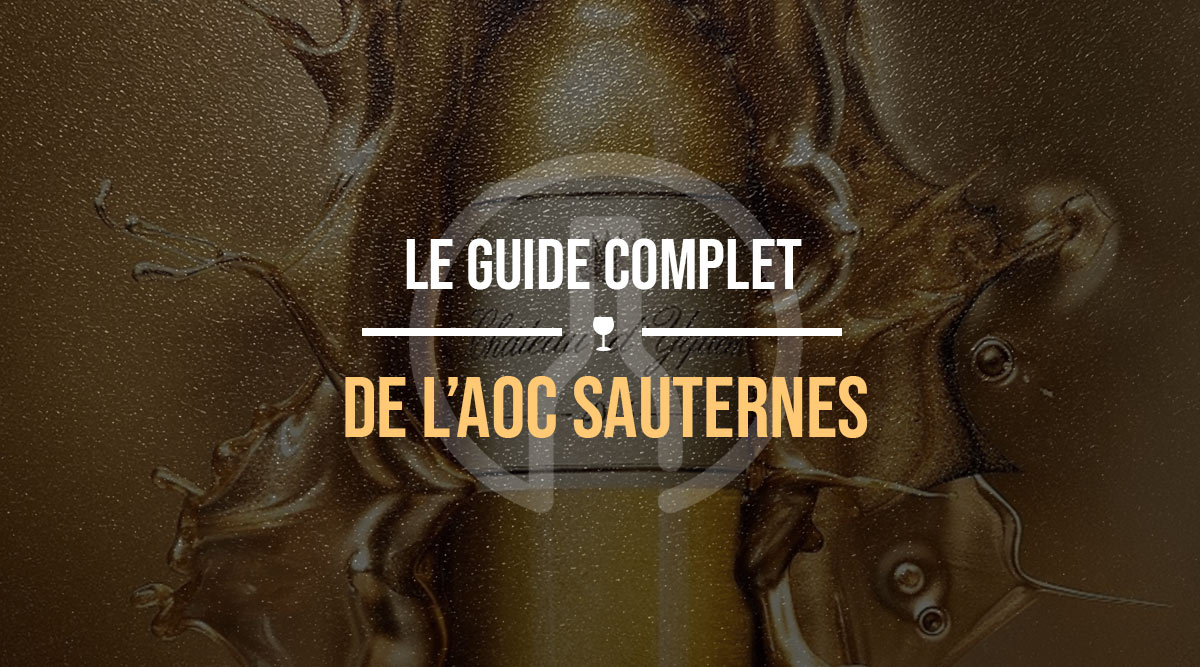GEOGRAPHICAL LOCATION OF SAUTERNES
Located 30 kilometers south of BordeauxThe Sauternes appellation comprises 5 communes: Barsac, Bommes, Preignac, Fargues and Sauternes, all on the left bank of the Garonne and on either side of the Ciron river. It covers 2,200 hectares and produces 41,000 hectolitres of sweet white wine.
HOW DOES BOTRYTIS CINEREA DEVELOP?
Visit Sauternes wines benefit from a special climate that's ideal for the development of Botrytis cinerea, the famous noble rot that gives Sauternes wines their candied, sweet character.
The vines are located along the banks of the Ciron, which generates a thick mist in the morning with the help of the sun, which settles over the vines, protected by the Landes forest. This stagnant fog on the vines will cause the fungus to develop on the grapes. Harvested late and loaded with Botrytis, Sauternes wines are unique in the world.
THE REQUIREMENTS OF THE SAUTERNES AOC
As with all Appellations d'Origine Contrôlée (AOCs), there are a number of requirements to be met in order to qualify.
- Here are just a few examples:
- Harvesting must be selective and successive, which means that harvesting teams have to pass over the same vine several times in order to select only those bunches that have reached the necessary maturity.
- The harvest must contain at least 221 grams of sugar per liter.
- Harvesting must be done by hand.
- Residual sugar (that which remains in the bottle) must be at least 45 grams of sugar per liter, which guarantees a certain sweetness.
SAUTERNES GRAPE VARIETIES
Visit Sauternes wines are necessarily sweet white wines. There are 4 grape varieties that can be used to produce Sauternes:
Sémillon: the appellation's main grape variety. It is the most widely planted and produces the most candied, gourmet wines. It brings aromatic complexity and a honeyed texture to the wine. Its thick skin enables it to resist Botrytis cinerea (noble rot) while soaking up the sun.
Muscadelle: a minority grape variety that gives exotic notes and freshness to the wine. It is used in small quantities.
Sauvignon Blanc is straighter. It brings acidity to the wine, necessary for the balance between sweetness and acidity. It gives citrus and white fruit aromas.
Sauvignon Gris is very similar to its colleague, but adds a little more sweetness. It's ideal for Sauternes wines!
SAUTERNES WINE AND FOOD PAIRINGS
Then there's the classic, Sauternes and foie gras, but there are so many different pairings to be made... Once the aperitif is over and the dish digested, you can enjoy your Sauternes with cheeses, more characterful ones like Bleu d'Auvergne and fourme d'Ambert. Some uncooked pressed cheeses will go well with slightly less sweet Sauternes.
Desserts also lend themselves well to it, whether chocolate cake or fruit tart. Even desserts with a high acidity are interesting, as the sugar balances out their freshness.
SAUTERNES WINE CLASSIFICATION
Visit Sauternes wine classification was created at the same time as the Médoc, in 1855. It comprises 3 levels, with Château d'Yquem as the only 1er Cru Classé Supérieur wine.
It then includes 11 Châteaux in the 1ers Crus Classés category, followed by 15 Châteaux in the 2èmes Crus Classés category.
Some of the Sauternes wines we offer:
80% Sémillon 20% Sauvignon
Benefiting from an exceptional micro-climate, Château d'Yquem is one of the world's finest wines.
Made up of 150 parcels, the vines receive special treatment throughout the year. For this cuvée, notes of white fruit, pineapple and sweet spices mingle with the toasty aromas of barrel ageing.
90% Semillon 5% Muscadelle 5% Sauvignon
The Château is one of the oldest in the appellation. It is one of the most complex and rich Sauternes wines. Composed of 90% of Semillon, it is dense, rich and very greedy.
> All Chateau Lafaurie Peyraguey in stock
THE BEST SAUTERNES VINTAGES
Visit Sauternes wines can be kept for a very long time, here are the best vintages in the appellation:
- 1986
- 1988
- 1989
- 1990
- 2001
- 2007
- 2009
- 2010
> More information on the best Sauternes vintages
And for those wondering how taste a Sauternes wineFor the best results, it's important to serve it chilled, but not too chilled. We recommend serving between 9 and 10 degrees Celsius to ensure freshness without overpowering the aromas.





![✨ Comptoir des Millésimes honors Champagne's great winemakers ✨[LINK TO THE ORGANIC CELLAR]We've selected 11 exceptional estates that reveal the full richness of Champagne terroir through unique, refined cuvées. Hugues Godmé - In Verzenay, this family-run biodynamic estate offers precise, vibrant champagnes with a beautiful mineral tension.Egly-Ouriet - A benchmark for the Montagne de Reims, its powerful champagnes, aged for long periods in barrel, impress with their complexity.Moussé Fils - In Cuisles, the Meunier grape is king. Pertois-Moriset - Pure, taut Chardonnay Grands Crus for lovers of chalky finesse. A fine address in Mesnil-sur-Oger.Geoffroy - In Aÿ, this domaine produces fine champagnes, carefully crafted and barrel-aged to reveal the full complexity of the terroir.Larmandier-Bernier - Biodynamic viticulture, exceptional parcels and purity. Crystal-clear, intense champagnes for connoisseurs.Roger Coulon - Eight generations of expertise at Vrigny. Balanced, subtle and elegant champagnes.A. Bergère - In Avize, a dynamic house offering expressive, fruity and accessible cuvées.Adrien Renoir - A promising talent from Verzy, he produces fine, complex champagnes with a true sense of terroir.De Sousa - Emblematic house in Avize. Richness, depth, long ageing: Chardonnay at its peak.Pierre Paillard - In Bouzy, the family magnifies Pinot Noir with vinous, racy and sincere cuvées.📦 Order now on our website#ComptoirdesMillésimes #Champagne #VigneronsIndépendants #GrandVin #ChampagnesdeTerroir #LivraisonRapide](https://www.comptoirdesmillesimes.com/blog/wp-content/plugins/instagram-feed/img/placeholder.png)